5 SEO Tips to Drive Growth Like You’re Yoda
This post is about an hour read and should be used as a reference guide for your search strategy.
There are a ton of articles about SEO tips. Some of them are really good, but I wanted to take a holistic approach to this concept. This is important for businesses in any industry, especially highly competitive ones that sell things like credit cards, health care, jewelry, real-estate and insurance. I wanted to really show you what you need to do to take your “SEO” to the next level. Here are some Yoda level SEO tips. Enjoy!
Check out my video interview with Rand Fishkin on the Evolution of Search
Yoda These SEO Tips are for You
Yoda is a wise business creature who believes in working smart. He is a CEO of the Jedi Academy where he trains Jedi Knights who fight evil and save the world. Yoda believes in branding, is a fan of great advertising, and adores taking care of his customers and employees. He is a shrewd businessman who likes making money and believes that there should be a positive return on his investments.
Yoda is a master marketer but the digital marketing world changed rapidly while he was focused on training the Galaxy’s next leaders, building his brand and running his business. Yoda is not an SEO expert, but knows that it is important for his business. Yoda isn’t going to panic about that because he knows there are SEO experts that can help.

Source: Yodaquotes.com
He believes in working with experts to help him solve problems, and that’s why he works with Han Solo, Chewbacca and some badass Ewoks to fight the Evil Empire. Yoda never let schooling get in the way of his education so he knows he will find the right information and act on it. He knows that you reap what you sow, and is willing to learn and future proof his business.
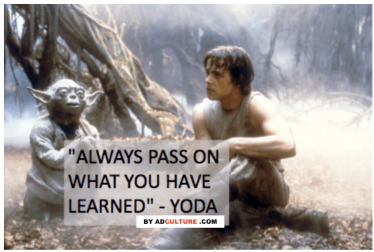
Source: Yodaquotes.com
Yoda, this one’s for you. I’m going to give you 5 SEO Tips so you can search like the badass galaxy saving Jedi Master that you are. Yoda, if SEO was your craft, then these are the tips you would give to those who were willing to learn. I’m also going to use some of your awesome quotes to help frame some of my points.
1.Focus on Content Marketing not SEO

Source: Yodaquotes.com
The focus on content marketing might seem like a strange SEO tip, but you should be doing content marketing and using technical SEO and data as part of the process.
In fact, if you speak to some SEOs they will tell you that SEO has evolved to Content Marketing, Inbound Marketing or simply into Growth Marketing. Some hate having SEO in their title and even work real hard to not have it attached to them because it can come with crippling connotations if you are trying to create content. Moz even dropped the SEO from its name because to create growth and amazing content, you have to go beyond search engine optimization.
Some people actually can’t comprehend that SEOs now focus on creating high quality content. However, with the growth of e-commerce and mobile this nuanced understanding is literally the difference between making money or not. As a content marketer, you do have to know how to write and understand, how to tell compelling stories which may be a challenge for some SEOs. However, the point is that most people’s concept of SEO is from the early late 90s-early 2000s when we were keyword stuffing and spamming the web with low quality content, link farms, and creepy link building directories. It makes sense that people question our content creation ability, but they must get over it. Content marketing drives business growth and SEOs have evolved and are leading the charge.
The Content Marketing Process is straightforward.
This is the process I use (and to be honest) there is nothing groundbreaking about it. However, you must pay attention to the details and evolve it to fit your needs. Here is a short summary of each step with a deep dive into Amplification because a lot of people think that if you make content people will somehow randomly find it.
“Many viral videos paid for their first million or so views and then they went”viral “.
Here are the steps that I use:
- Research & Identify topics: Identify topics and trends that have high search demand and social engagement that are possibly trending and, most importantly, your company has the right to speak about.
- Determine Content Type: Figure out the type of content that you want to create and for what channel. You should make sure that you are creating content that will live on your website and be pushed through the various channels (social, native etc). You should also make sure that the content can be repackaged into other types of content. For example, your blog post series can easily be turned into an ebook, or a video series if you plan correctly.
- Micro-Moment Mapping: You have to align your content to target different parts of the consumer journey. This should be aligned to your keyword strategy, and the content should fit the device or channel that the consumer is using.
- Optimize: The content should be optimized for organic search on whatever platform it lives on. Google is just one of many search engines. YouTube, Facebook, Pinterest, Apple’s App Store and even Amazon are search engines to consider utilizing as well.
- Report: Create reports to measure and track your ROI. You should be able to tell what worked and what did not work.
- Amplification: All content should be promoted via different channels so you can determine which channel (social, search, email, native etc) drives results. On a deeper level, you should look at which element within each channel works the best (i.e Facebook vs Twitter etc).Think about it this way: each piece of content you create is like your baby. When you make a baby, would you just let it sit there hoping that the world would find it and pay attention to it? No, you wouldn’t. You would pay money to dress it, educate it, and send it off out into the world with financial support until it is successful enough to start paying you back. That’s basically how you should think about any piece of content you create for your brand. Native advertising is one of the best places to invest in content amplification. You can promote your content for incredibly low cost per clicks. This is because on Google and other search engines CPC are set by vertical, content quality, and your ability to pay. So the health care and legal industries are going to pay a ton per click because their keywords are more expensive, and there are a lot of people willing to pay serious money for those terms. The basic laws of supply and demand apply here, and it can cost a lot. In contrast, in Native advertising you are usually not bidding on keywords (though you sometimes can). In addition, native placements usually perform incredibly well because they are contextually relevant to the content on the page around it.
Facebook example: For example, I just boosted a post on Facebook for $30 and got incredible engagement in a cost effective manner. This is because of how well I can target people on Facebook. The post targets people who will respond to the post when they see it. So the shares, clicks, and comments keep rolling in. Now that I know this post does well on Facebook, I’m going to spend some time writing an actual article on the topic because I know people care about the topic.
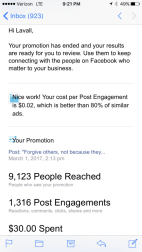

Three Great Native, Content Marketing, and Social Amplification Tools:
- OneSpot: They are way more than native and social amplification. Their content personalization software is amazing.
- Zemanta: They cover a wide range of the other platforms, and have a very robust offering.
- OutBrain: They are a classic native platform, and can have your placements on Forbes and other sites.
Action:
Make sure you allow your “SEO” team to be part of the full content process. Always amplify your content to make sure you set your babies up for success.
2.But Technical SEO Matters More Than Ever
Even though SEOs have shifted towards creating great content, the technical aspects of content are crucial to your success.
You need to focus on building content that is technically optimized to be found. Why put the time in to build content if no one can find it when they search online?
Technical SEOs should be able to speak the same language as your CTO. I’ll take that a step further and say if your CTO does not understand and know how to apply technical SEO to the things they are building, then you are in trouble. I’ve seen engineers and CTOs rebuild websites and literally stop all organic traffic and sales to the website because they:
- Choose a Content Management System that is not SEO friendly. Fun fact: Adobe’s Experience Manager (which many brands are flocking to) does not come SEO-friendly out of the box. You have to make customizations to get basic website page level things like meta titles and descriptions onto your site. So even the major companies who are producing these content management platforms overlook the importance of technical SEO.
- Some CTOs blindly follow trends, like single page parallel scrolling sites, that they don’t know how to get index on search engines.
- What’s worse is when they miss basic SEO elements.
- Or they forget to remove the “No Index, No Follow Tag ” from the staging site before launching it.
- Another misstep is not blocking a staging site from being indexed in the first place so people find unfinished work that competes with the live site.
- Worst of all is how many more very specific examples I have of this.
It amazes me how many CTOs, web developers, and engineers don’t know the technical requirements needed to make sure that web pages, apps, videos, images and other pieces of content rank well when people search for them.
This is even more important because of mobile. Google is creating a new mobile first index which will become the main search engine. Knowing how to technically optimize your content to load quickly on mobile devices is essential to the success of your business. If you have an e-commerce site, it’s even more important because as Kiss Metric says your conversion rate drops by 7% for every second it takes your page to load.
Here are a few technical SEO things to know:
- Keywords: Humans and search engines communicate using words. Each page on your site can be optimized to target 1-2 keywords. The more pages you have, the more traffic and sales you can get based on the increase in keywords you can target. Search engines have moved on to semantic search. This means that you have to use terms and objects that relate to each other to rank. For example, if you are targeting “karate school in NYC” you should have a page that speaks to karate in New York but also different types of karate. You should mention famous karate fighters and practitioners etc. The more information and things related to karate you add, the more likely your page will rank. There are many amazing keyword research tools out there from enterprise tools like BrightEdge to Moz, but SEMRUSH is my favorite. The reason it is my favorite is because it gives you paid search, video, and competitive info like AdCopy and more. Again I’m all about integration so getting SEO, PPC, Video and Display information is clutch. Try SEMRUSH now for free by putting your website or a keyword into the widget below. This is an affiliate widget so we can pay for a delicious, sugary, caffeinated beverage like a Caramel Frappuccino from Starbucks. This is the fuel that drives the production: 6,500+ words of helpful content.
- Meta Titles and Descriptions: Meta titles and descriptions are elements on the page that allow search engines and users to understand what your site and the pages are about before they land on them. These must contain your target keyword, be of optimum length, and have a call to action that encourages searchers to click.
- Rich Snippets: Rich snippets is code that can be placed on your site that gives an additional layer of context around what some elements on the page are about. You can use rich snippets to show product ratings and more. Mark up all your content using Schema markup. This allows you to let search engines know exactly what the page, image, or piece of content is. This is important for local search because you can verify to the search engines that your contact page is for a local business at your current address. You can even go as far as adding latitude and longitude to give precise coordinates of your business.
- Voice Search and the Answer Box: Structure your content to answer questions using ordered lists HTML. This will give it a good chance to rank in Google’s answer box which powers voice search. Dr.Pete from Moz did a great post on how to rank on Google Home. Ranking on Amazon’s Echo is another story. I’ll do a post specifically on that so stay tuned.
- Page Speed: Slow pages are a killer. Use a Content Delivery Network (CDN) to serve your content. Deliver CSS from the server and not in line code. Compress all of your images, CSS, and Java Script. Use browser caching to search content that is not going to change, so that your website visitors don’t have to make server calls every time the page loads and the content needs to be displayed. Serve your href lang page versions from a sitemap and not on the page. This will make sure that different language versions of the page load quickly. Use GTMETRIX.COM or Pingdom Tool to test your page speed and get additional recommendations.
- CMS Vetting: Content management systems should be thoroughly vetted to make sure that they can be technically configured for search. I have started the process for you by reviewing the majority of CMS out there. (I have not done them all, but we are well on our way!) Here are my quick recommendations. In general, Word Press is the best. If you want one for e-commerce, use Magento or Shopify. If you are looking for an “enterprise solution” which is really code for “they are going to make you pay a ton,”use a CMS like Sitecore.
- URLs: URLs should be easily customizable without useless numbers, category slugs, or other items. The perfect URL looks like this: yoursite.com/target-keyword. Ideally your domain name should also have the keyword in it like, such as, sleephq.com/better-sleep . “Sleep” is the overall target of the site and”better sleep” is the target keyword for that page.
- Site Redesigns: If you are doing a site redesign, it is essential that you do a site migration as well. Usually when you redesign a site, the architecture of the site changes. Sometimes the URL structures change, the amount of pages you have may change, etc. You have to make sure that you match the old pages with the new pages so you can set up 301 redirects. This will make sure that the authority of the old pages get transferred to the new pages. Once you set up redirects you, make sure you fetch the site using Google Search Console. This tells Google to come crawl the site and index the new content. Usually your ranking and traffic drops after a migration since Google is trying to make sure that all the change on your site is on purpose and not because someone hacked the site. The site migration will ensure that your traffic and sales come back quickly.
- Internal and External links: Links matter. Use internal links which link to other pages on your site to help pass link equity from one page to the next. Use external links to link to valid sources to support what you are talking about.
- Backlinks: Backlinks are links from other sites. This isn’t really a technical requirement, but it is a huge part of being able to rank. Link building is key to getting links. One good way to do this is to find websites that let you contribute articles or guest posts. Here is a guest post list that shows you a ton of websites that allow you to write articles to them. I suggest you submit your request to write an article on all of the sites that relate to your industry.
Action: Learn technical SEO or hire someone who knows it and knows it well. Make sure your CTO, engineers, and tech people understand that they must build things that are findable.
3. Leverage Search (SEO and PPC) Across Channels
If you are doing SEO without integrating it with PPC, or PPC without integrating it with SEO you are not leveraging the full power of search. On Google, a general click through rate split is 70/30. 70% of clicks go to organic pages (SEO), and 30% go to paid ads (PPC). Now this has changed based on Google changing the design of their ads to make it harder for searchers to differentiate between them and regular pages. It also changes drastically if you are searching on a mobile device. Google has done an incredible job of designing the mobile search engine result page (SERP) to have ads first and then the organic pages pushed well below the fold. Use SEMRUSH to help integrate SEO and PPC plus get competitive insights. I use this tool every single day.
Your goal should be to try and get as close to 100% of that search traffic from each keyword. So you must integrate SEO(70%) and PPC(30%) to get the 100% win.
Here are 4 quick Integrated Search Tactics

- PPC for SEO Meta Data: Use your best performing paid search ad copy to constantly update your organic pages meta titles and descriptions. Do this on a quarterly basis.
- SEO for PPC Landing Page Performance: Have your technical SEO optimize your paid search landing pages so they load quickly. This will increase conversions, your quality score, and lower your cost per clicks.
- SEO for PPC Keyword Expansion: SEOs can create new content that will allow you to expand your PPC keyword targets which will help you never get to a point of diminishing returns on your ad spend. The more keywords you target, the more sales you can drive and the more people you can reach.
- SEO to Save Money in PPC: Why pay for expensive clicks when you can create and optimize a page to rank organically for the term? There are some terms that cost $115 a click. So if you are in health care, legal and other fields where CPC are expensive then you will save a lot of money with integration.
Now SEO and PPC integration is great but that is the basics. What you really need to do is cross channel integration. Every campaign you run should be activated in search.
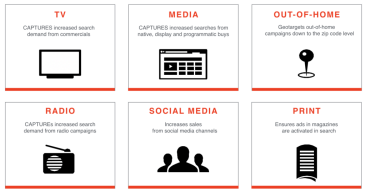
-
- TV: TV commercials can increase search demand by 30% and consumers search 4 seconds after they see a commercial. The trick is to make sure that the creative and the message of the TV spot are replicated in the paid search ads. This method can also be used to target competitors as well.
- Out of Home: Now that you can do programmatic out of home, the world just got more connected. You can improve this by using paid search campaigns to geo-target your out of home placements. This way when someone searches while walking by your placement, you can reinforce the message in a PPC campaign.
- Print & Radio: You can use paid search ads to target your print and radio placements as well. Again the messaging has to match and if you have an e-commerce site, I would suggest using coupon codes to track performance based on placement.
- PR: Your PR and your SEO teams should be best friends. PR teams can get the links and reach influencers that your SEOs might not be able to. Your SEOs can help the PR team use data to create content, no-follow sponsored links, and optimize your partners pages to rank on your behalf.
- Display, Native and Paid Social: Display and native ad buys work best when they lead to relevant content. SEOs can help your native and display teams create landing pages to drive media spending to. Paid social can be used to target lookalike audiences, and help you be hyper targeted with your content.
Action: Make sure your search team is part of every campaign from the beginning. They will be able to give you great data so you can build campaigns to solve problems people are searching for. They will be able to help bring that campaign to life and make sure it connects with the people that see it.
4. Growth Marketing = The Future
This tip is so important that I’m giving it to you twice so I can reinforce my point and dive deeper into it. However, it is a dense topic so I’ll have to break it down into acts.
The main thing you have to understand is that you are not just competing with your direct competitors when it comes to SEO. In search, you are competing with every site that ranks well on the search engine for the keywords you are targeting. You also have to come to grips with the hard reality that in search you are also competing with Google. To be clear, this is nothing negative against Google, but it is what’s happening. Google has hired an SEO manager and contract SEOs . They are using SEO to rank on Google, Yahoo and Bing for high traffic terms like “News” and “Video.”

What’s even scarier is that Google is using things like the Knowledge Graph, Accelerated Mobile Pages (AMP), and the Answer Boxes to make sure that users get the information they need with out ever going to your companies website.
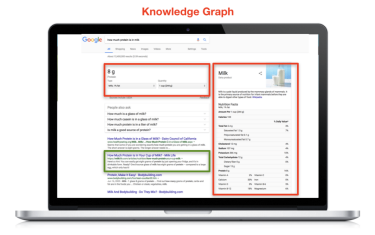
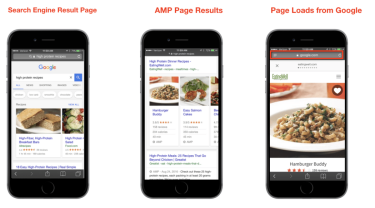
They are literally using your own content to absorb your website traffic; so even if you rank, people don’t go to your website. This becomes more interesting when you look at voice search in the home. We know that the answer box powers Google’s voice search. However, when someone uses Google home, the brand that ranks in the box only gets a slight mention when Google answers the question. All of this is a double edged sword for brands because you must optimize to leverage these changes on Google. Ranking in the answer box, in news via AMP, and on the knowledge graph helps you outperform your competitor. However, the more you optimize, the more Google is getting out of your pages.

Why is Google Doing This?
Google has a great business reason for doing this: Google built its search dominance by being very good at getting people to use their site to find other sites. However, if people leave Google, it’s bad for business because people are not spending enough time on Google. This means Google’s paid advertising business is less effective than it could be. Now enter Facebook, who built a similar paid product, but has an enormous dwell time. People spend way more time on Facebook than they do on Google, and as a result advertisers have begun to shift ad spending to Facebook.
Facebook Statistics:
- Every 60 seconds on Facebook: 510,000 comments are posted, 293,000 statuses are updated, and 136,000 photos are uploaded.
- Facebook takes up 22% of the internet time Americans spend on mobile devices, compared with 11% on Google search and YouTube combined.
- Users spend an average of 20 minutes per day on the site.
- Facebook accounts for 62% of social logins made by consumers to sign into the apps and websites of publishers and brands.
- 80 million people use Facebook Lite – the app for the developing world’s slow connections.
- Facebook generates 4 new petabytes of data per day.
- Facebook now sees 100 million hours of daily video watch time.
- More than 250 billion photos have been uploaded to Facebook.
- Users generate 4 million likes every minute.
- This equates to 350 million photos per day.
Since Facebook is a social media site, they have the ability to target much better than Google does, which is an additional benefit. They also launched Facebook Graph Search which will be a very powerful social search engine and will compete directly with Google’s Search Engine. Facebook even just launched Facebook Jobs so you can now search for and post jobs on the platform.
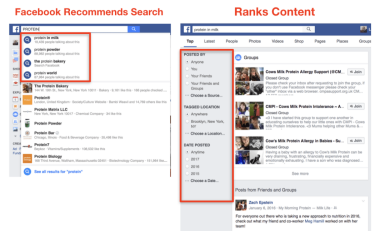
So regardless if you like it or not, Google is a competitor in search. What all of this means to brands is they now have to create content that is so incredible that Google can’t replicate it. It has to be so special that people are dying to visit the company’s website to see it and share it.
This is a MUST because if you don’t do this, your competition will and you will soon be obsolete.
Act: II – The Content Craze
One day we all woke up and heard the content call to arms. Someone said, “Content is King!” very loudly and it echoed through the internet causing vast ripples of chaos. Content is not king, as you will see below. Brands are just wasting money on content just to have content.
“Content is not King. Content in the right Context is King. “
The context you put your content in is everything, and user intent across the consumer journey drastically affects the type of content, consumption area, length of content, and other important aspects of content marketing. Regardless of this fact, most people have been brainwashed to the saying “Content is King.” Everyone from big brands, to agencies and startups scrambled in a mouth foaming frenzy to be content focused similar to Black Friday Shoppers at your local Walmart. The only difference is that way more money was wasted on useless content than useless Black Friday junk.
The best part is that everyone else also scrambled to get into the content game, but most are a bit behind the “SEOs”:
Content Craze Overview
Brands: All of a sudden, brands wanted to become publishers and start producing, buying, and leasing content. The trouble with this is that most of the brands were trying to get content just for the sake of having content. Most of the content had no value for the brands because it was not owned, optimized, or original content. Leasing or “renting content” from a publisher, say AdAge, to power your site is terrible for your SEO. I’ll give you a deep dive on why at a later time.
Content Platforms: Content marketing platforms popped up to service this need, but fumbled and most are altogether useless. Some of the platforms have learned and a few like NewsCred are pivoting into producing original digital content vs. selling licensed content. Buying licensed digital content for your website is like renting fake muscles. One, they don’t give you any real performance benefits like strength and two, once you stop paying they go away. This matters for brands because licensed website content does not rank well on search engines. It just looks good on your website, but adds very little value over time. So over time, brands will realize this and companies that sell this type of content will be forced to change.
PR Agencies have the editorial experience and a pretty good process for content creation, so they started pumping out content. The problem is they don’t know a thing about technical SEO, so none of the content will ever get found organically. This means they have to rely on spending a ton of money to promote the content. Most also don’t know how to use search engine data to create content people are looking for. I’ve witnessed PR folks add “SEO” to their content production process to show that it is part of their process. However, when you look at the level of technical optimization they apply to the content, it is usually non-existent. They get that they have to get keyword data to help inform the content they create, but don’t apply the knowledge very well. This act of just checking the “SEO box” without really learning it and applying it to your content process will not end well for those who play that game. If your content is not driving performance, like increased site visits, lead generation or sales, then you have to fix your content process.
Social Agencies: Social agencies for the most part have always produced good custom content for their clients. They figured out how to produce cost effective content, rapidly and at scale. However, some spend too much time building content just for the social channels and not for the brands website. This is a huge mistake because social media sites are rented land that brands don’t actually own. Social sites are not assets because they depreciate over time like those MySpace pages we used to love. Brands spent millions of dollars on those pages and never thought that MySpace would not matter in a few years. Some even grow out of favor faster than that. (RIP Vine.) Now you also have to pay to reach the millions of people who liked your Facebook page because organic reach is less than 2%. Most of the social agencies, and brands for that matter, missed the fact that websites and apps can be and should be built to be social. Some social media agencies don’t focus on this because most are judged on metrics like increase in social followers and likes within a given social platform. Most aren’t held accountable for leads, sales, or site traffic driven from said social channel. Nor are they held accountable for social engagement on the brands website. Brands need to use social media sites to collect 1st person data about their visitors and customers so they can service them and solve their problems better. They also need to be able to differentiate which content and social channel drives the best performance on their site. They need to set better KPIs for their social teams.
Publishers: Publishers like the New York Times were quick to get on the content train. They make amazing content anyway so they created an internal production agency like the T Studios to partner with brands to create branded content. This was a great move for the publishers and for brands who can’t create content on their own yet. However, this should not be the brand’s main source of content production. Also, most of the people on these teams have no real technical SEO background so they end up being like the PR agencies who create content that no one is searching for and that is not optimized to be found. Brands also make the mistake of having publishers just build the content on their site and not on the brands websites. That’s great for the publisher if they optimized the content for search they get the organic traffic and backlinks, but the brand doesn’t get the organic search benefit or links so they are not getting the most out of the money they spend for that content. Partnering with publishers to create content is important, but brands need to negotiate better deals to have a different version of that content sit on their site so it can be optimized and their website can get organic value and increase in page authority.
Production Studios: There are some amazing small production studios who have a chance to get this right. They have figured out how to create high quality, cost effective content at scale. If they learn how to optimize it and how to use data to generate ideas they will be unstoppable. They will topple the bloated advertising agencies that overcharge their clients for subpar work.
To Summarize
The conclusion is that most of the above got content wrong or half right, and I know you might want to boo me off the stage, but it’s the truth. However, SEOs finally got content right after spamming the internet for years.
SEO (Growth Marketers): Good SEOs not only shifted into pure Content Marketing using technical SEO as part of the process, they moved on to Growth Marketing. They know that people consume content in many ways and on many platforms. SEOs now focus on growth and create content to help drive performance and growth in email, social, cross channel, search, native, display and more. To be a good SEO in today’s world, you have to be a growth marketer. This means you have to know how the various digital marketing channels work to drive business growth for your clients. To prove this you only have to look at TripAdvisor as a case study.
TripAdvisor: Growth marketing via optimized high quality content is at the core of what TripAdvisor does. They even use their robots.txt file to try and recruit growth marketers.

They also have master not only integrating SEO with PPC but integrating search to other channels like TV.
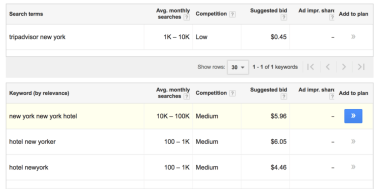
A while back, they launched a campaign with TV commercials that associated search and a better travel experience with their brand. This increased search volume for terms like “TripAdvisor New York, ” which they then ranked for in SEO and bid on in PPC. The TV spots increased the search demand for the terms and TripAdvisor can bid on the terms for well under .45 cents without having to worry about competition or pay over $4.00 per click for the New York Hotel terms.
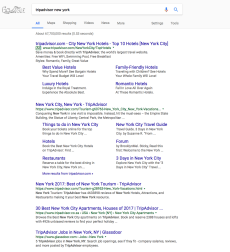
Well established hotel brands now have to pay TripAdvisor an affiliate fee for traffic because they were too slow to “get” that search is a disruptive human behavior. TripAdvisor invested in creating amazing content that is optimized to rank for certain keywords. They have a market cap of $1.3 billon because search was built into their business model. Numerous companies have followed and are now disrupting almost every industry.
Check out McDonalds that place that Coke tastes SO good campaign. It’s another great unconventional use of search
5.Focus on Growth Marketing not SEO
As mentioned above, SEOs took content marketing to the next level by focusing on growth.
Growth marketing is a real thing and if you are a growth focused marketer that means you are not only looking to drive growth from outside the organization, but you are also looking to create efficiencies internally that may have prevented growth in the past. This might be anything from product development, billing, skills training (or anything else!) that can prevent growth. In a personal example, I worked for an agency that did website development and technical SEO was not built into this process. SEO was the thing you added to the contract so you can cut it when it came to negotiations. I was able to teach them that SEO has to be built into every web or app build. After years of redesigning sites that lost their clients traffic and years of building sites that no one could find, they learned. This meant if we built 10 websites, we got 10 SEO projects which lead to extreme growth for the search and content group.
How Does this Apply to Content
If you put this in the lens of content creation then start by optimizing the content that you already have as you plan and build towards producing additional content. Once all content is optimized then you use optimized content to drive growth for your business via the most efficient channels. More importantly, you focus on building things that will not only be findable (that’s default) but have growth intrinsically built into it. For example, if a piece of content is not easy to share, do you really think people will work to share it? Of course not, humans are built to take the path of least resistance. So part of growth is building content that is easy to share via multiple channels, and is so good that people feel that they have to share it. The content has to be so good that people want to be the first to share it so they can feel like they had a part to play in its existence. Human beings love the recognition that comes with introducing other people to amazing content, experiences, things, places and other people. Think about how many times you said or heard someone say, “You have to read this book?” orr “Have you seen this show? What! You have to see it!” or “Have you met so and so? You have to meet her, she is a legend!” This is because just like search is a natural human behavior, so is social. Putting people on to cool stuff raises your social standing and worth to that individual. Social media sites like Facebook allow us to do that at scale.
Growth focus marketers understand this and ensure they learn the skills that connect with innate human behaviors. Search is a behavior, social is another, and content is the medium that connects these behaviors and allows us to tap deep into consumers wherever they happen to be on their journey towards making a purchasing decision.
Action: Learn a new skill every year that builds towards making yourself better at Growth marketing. I started with video editing, then building website, then SEO to learn how to get people to the websites, then social media to increase engagement and awareness, then email to have a one on one relationship with people who signed up for the list. All of these skills build on each other and over time you learn how to put them all together to drive growth for you business and clients.
6.Have Patience

Source: Yodaquotes.com
You’re not going to learn all of this overnight, and even if you do have a grasp on it and want to put it into action, there might be some bumps in the road. Unless you are actually the CEO and your company is nimble enough to change, getting people to understand that SEO is really growth marketing will be tough. However, I have learned that change takes time, patience, and education are the only ways to drive change.
The good news is if you act then you will be a change agent in your company and you will reap immense rewards. I’ve used my understanding of search/ growth to more than triple revenue and growth for my agency, and more importantly drive impressive and unbelievable results for my clients like 1,200% increase in website traffic, $14,400,000 in e-commerce revenue in less than a year, and 109% increase YoY in email lead sign ups.
Yoda you will be fine because after all you said this.
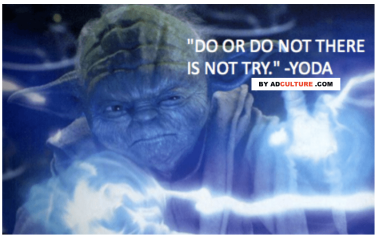
Source: Yodaquotes.com
This post is dedicated to the brilliant growth marketers with SEO titles who work as agents of change within their companies. Keep fighting the good fight because Yoda is on our side. This is also for my clients who embrace SEO and growth marketing and allow us to do the best work possible. I’ll be your Ewok for as long as you will have me.
If you are Yoda, a growth focused marketer (regardless of your title) who loves their craft or just loves learning please share or like this post. #yodalovesgrowth

“May the force be with you!” Yoda

